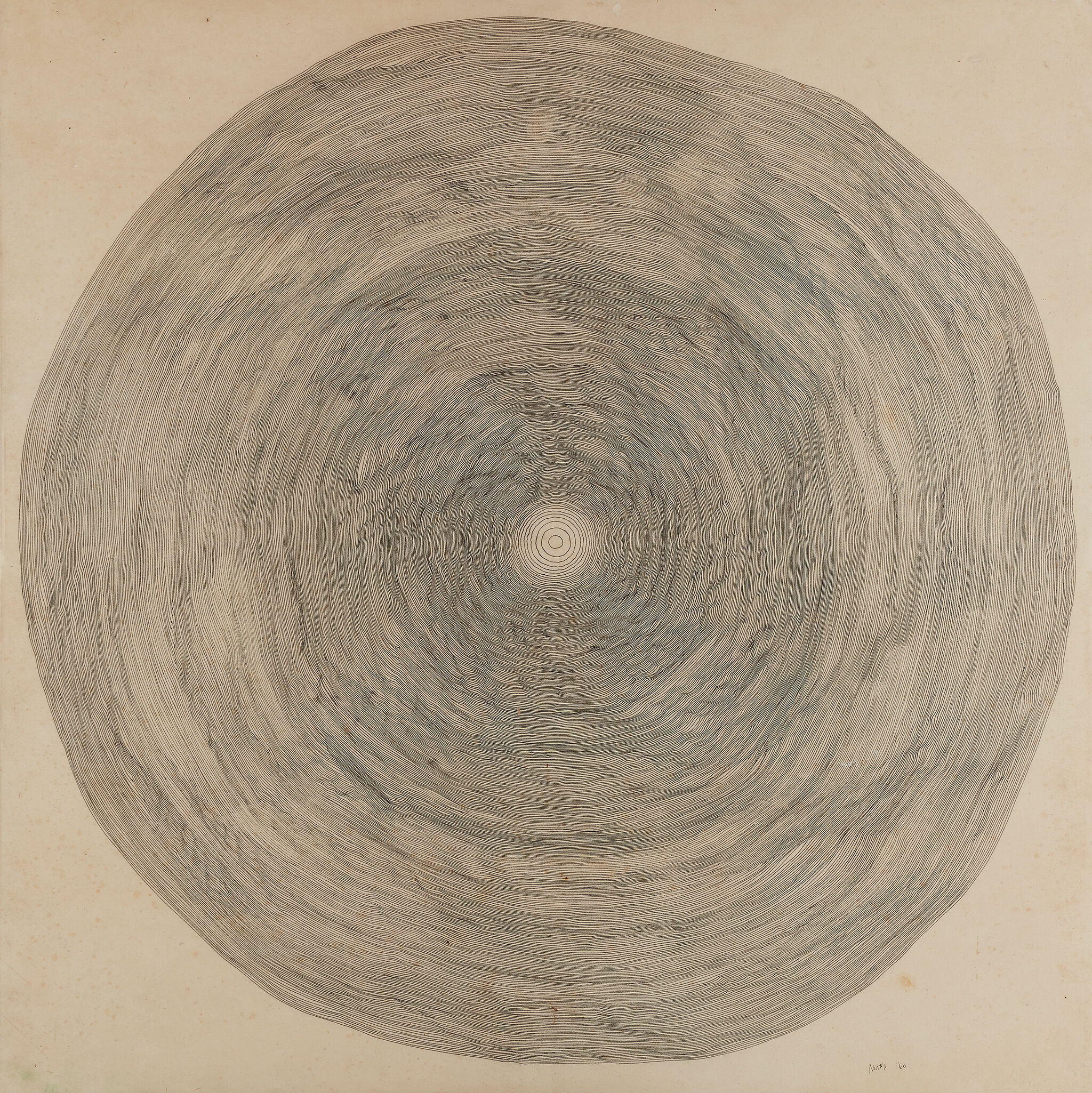Ruth Asawa Through Line | Art & Artists
Sept 16, 2023–Jan 15, 2024
Ruth Asawa Through Line | Art & Artists
Growth Patterns
6
Asawa's method of working outward from a central point, whether in concentric rings or diverging branches, began to take shape in the early 1960s. "I'm just interested in the way nature grows and structures," she explained, referring to the spiral or rippling patterns that inspired her. Drawings of tree rings, lettuces from her garden, and car headlights, demonstrate Asawa's concern for connectedness and consequence—how starting from a particular point has radiating implications.
Central to this approach are Asawa's tied-wire works, a project she began in 1962 when friends returned from a trip to Death Valley with a gift for the artist: a dried plant for her to draw. Challenged by rendering its entanglements in two dimensions, Asawa instead reached for wire to better grasp the plant's structural intricacies. Bundled at the center and dividing outward, her series of tied-wire sculptures emerged. Asawa then returned to paper in order to translate into line what she had learned through wire.

